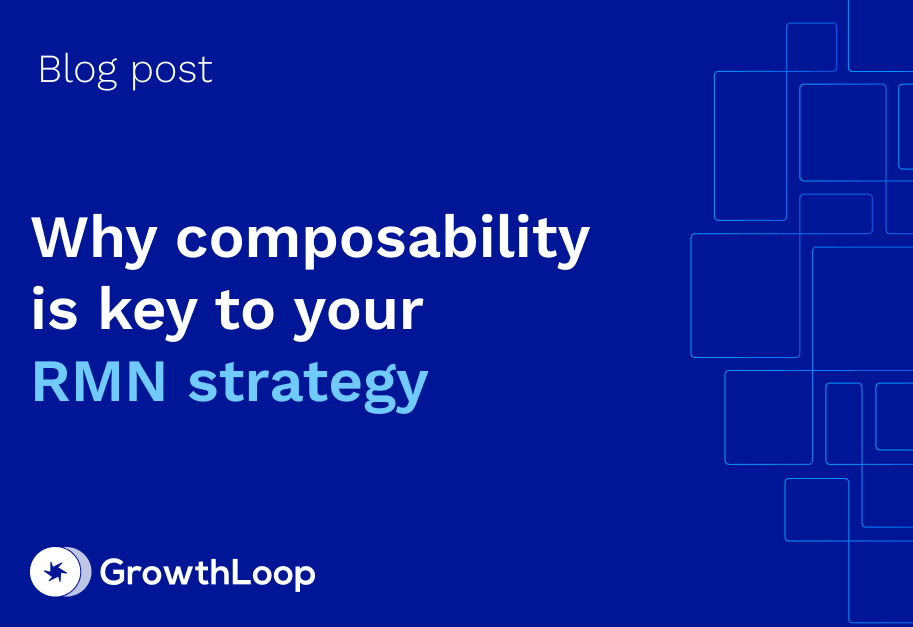How do I build a commerce media network?
Underlying a typical commerce media network is a tech stack comprising the following four platforms:
1. A cloud-based enterprise data warehouse
A modern commerce media tech stack starts with your data cloud and golden record data store as the anchor.
A data cloud-based warehouse unifies first-party data creating a single source of truth and enabling zero-copy, which eliminates data silos. This centralizes all first-party data, enabling the CMN to provide an accurate, 360-degree view of each customer. It also eliminates risky imports from and exports to data sources often housed in siloed adtech and martech platforms.
Among the most commonly used cloud-based data platforms are Google’s BigQuery, Amazon’s Redshift, Snowflake, and Databricks.
2. An audience and intelligence layer
This type of platform — often a composable customer data platform (CDP) or Compound Marketing Engine — sits atop the data warehouse. It provides tools for audience building, campaign performance analysis, and campaign optimization across all available marketing channels, as well as the other platforms in the tech stack.
These platforms often employ AI to surface new opportunities and insights. They also typically include self-service technology to empower marketers to work with data directly, relieving the ad ops team from rote data-related tasks.
Most importantly, these composable tools feature a closed-loop architecture that feeds CMN campaign performance insights back to the data warehouse, so advertisers can use it to optimize campaigns more effectively.
3. An on-site ad server
An on-site ad server powers monetization of your owned digital property inventory. It delivers sponsored search, homepage banners, and product ads directly within your ecosystem, turning shopper traffic into high-margin media inventory.
Moloco, Kevel, Koddi, and Criteo are all well-known onsite ad servers.
4. Demand-side platform for off-site activation
This provides a single interface for bidding on and purchasing different types of digital ads from the CMN’s various channels, or even other CMNs. It is an integral part of programmatic advertising.
A demand-side platform may also serve those ads across many types of channels, from banners on search engine results pages to in-app ads on cell phones to native videos in social media feeds.
Popular platforms include Kevel, Koddi, The Trade Desk, Xandr, and StackAdapt.








